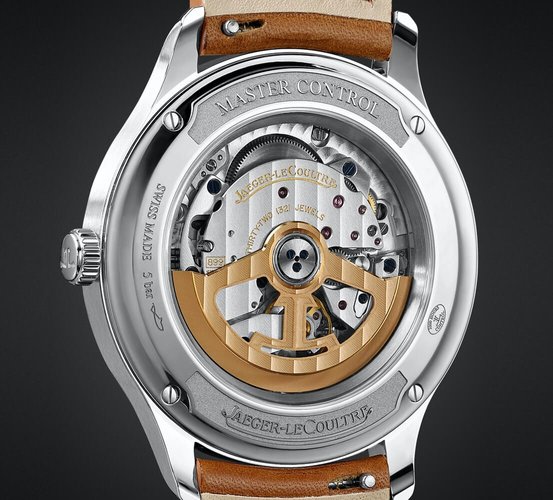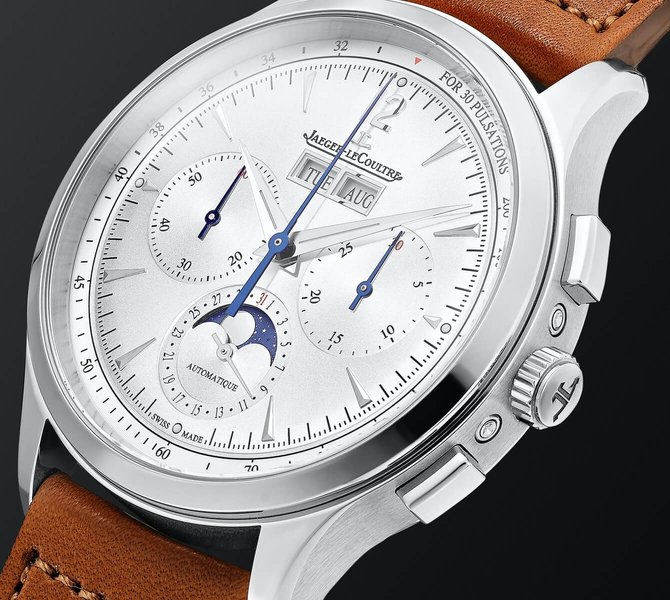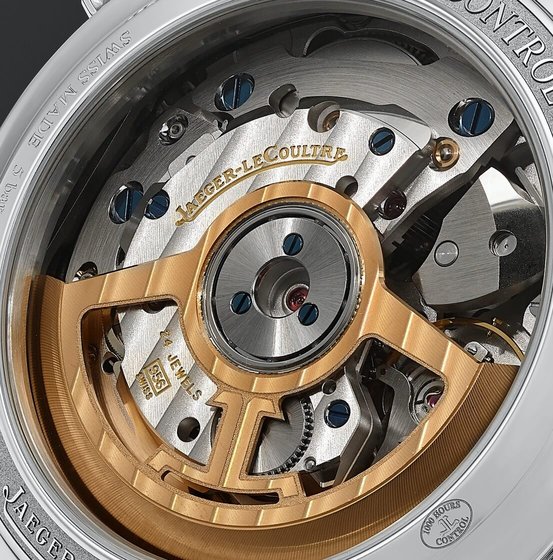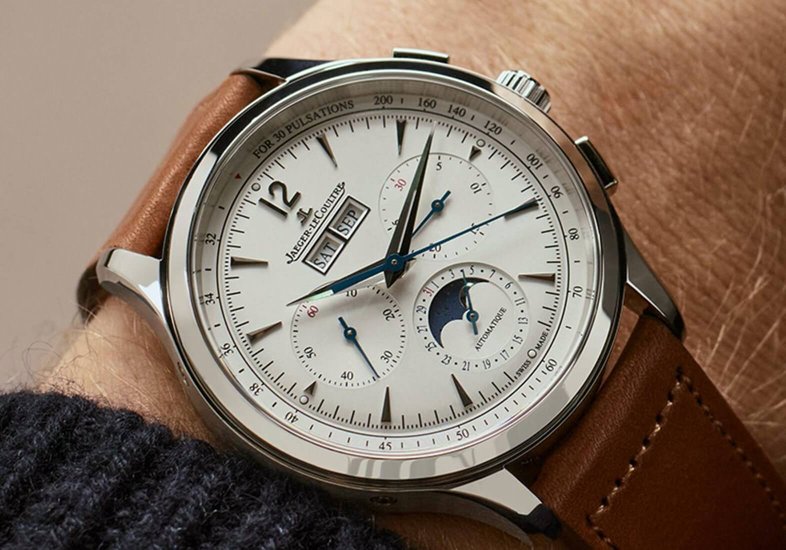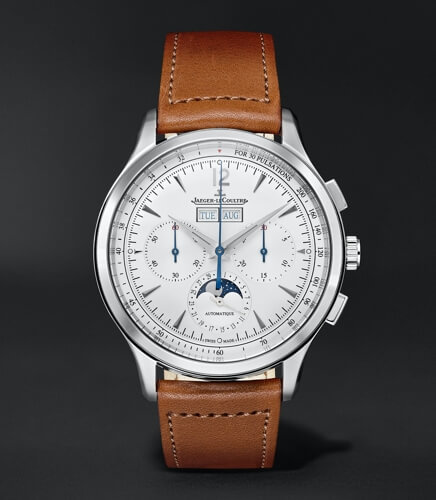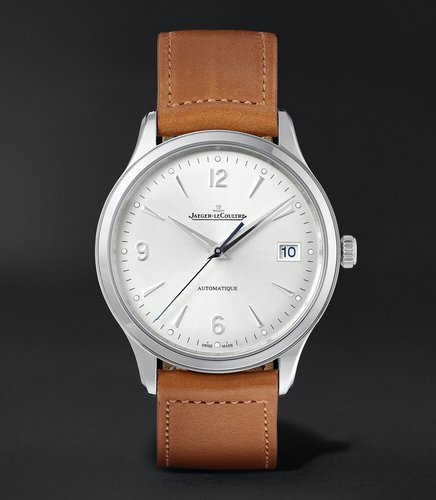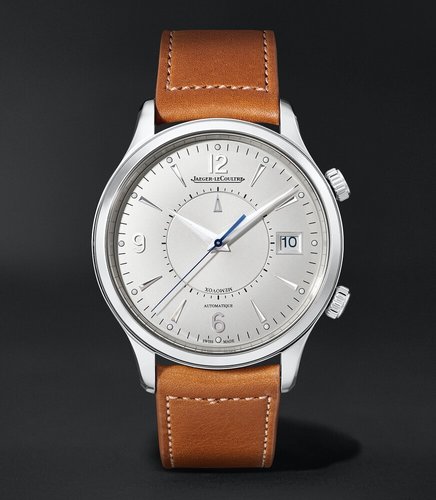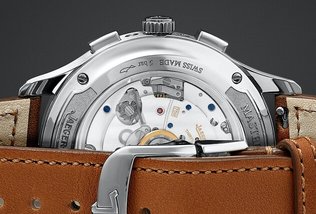The Case
Put simply, the case is the part of the watch that houses all the timekeeping elements, protecting them from normal wear and tear as well as the elements. Jaeger-LeCoultre has subtly updated its cases for this line, drawing on its great round watch designs of the middle part of the last century. Made from polished stainless steel, they feature a clear “exhibition case back” window to show off the inner workings of the timepiece.


